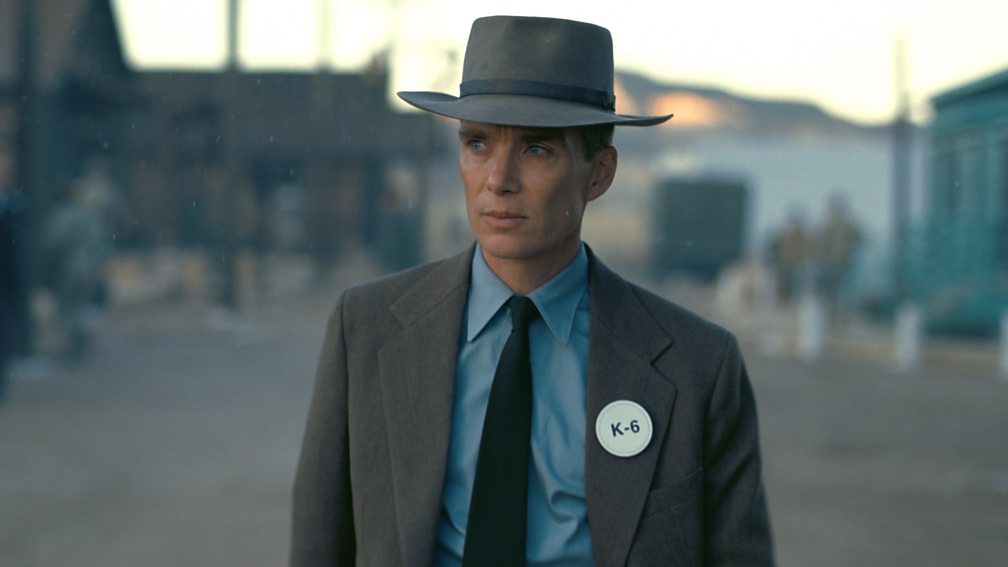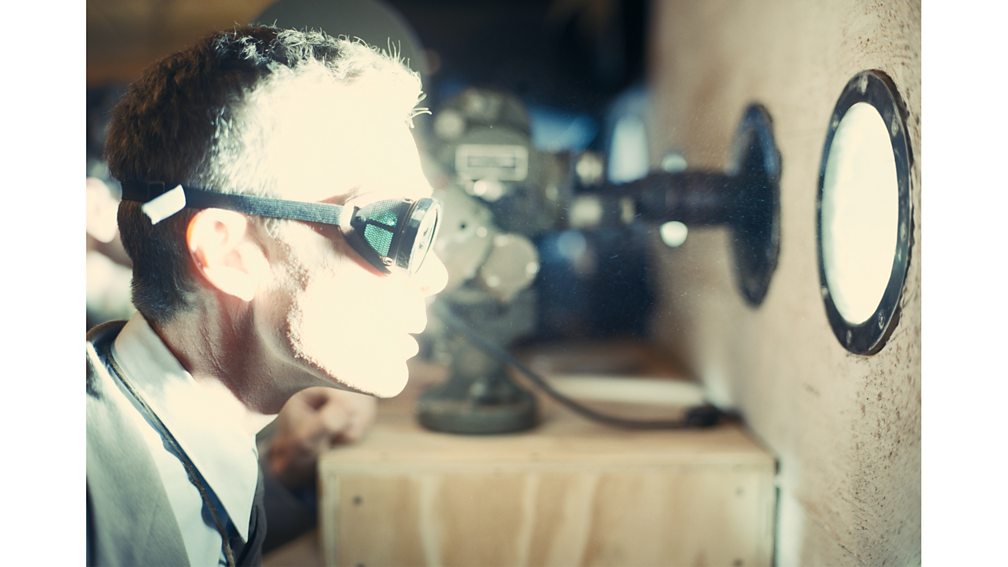The one thing Oppenheimer gets wrong

Christopher Nolan's Oppenheimer is surprisingly authentic, but, explains Dorian Lynskey, there are two key scenes where the film deviates from reality.
We are accustomed to hearing historians protest that biopics mangle the truth. And we are used to hearing screenwriters such as Aaron Sorkin and Peter Morgan respond that it is legitimate to scramble chronology, invent composite characters and fabricate incidents in order to tell a deeper truth. But there has been little controversy about the authenticity of Christopher Nolan's Oppenheimer. For the most part, the writer-director has chosen the historian's responsibility over the dramatist's liberty.
More like this:
It is testament to the inherent drama of Oppenheimer's life, and of the Manhattan Project's three-year effort to design and build an atomic bomb, that the vast majority of the film's most memorable scenes and lines are taken straight from Kai Bird and Martin J Sherwin's book American Prometheus: The Triumph and Tragedy of J Robert Oppenheimer, or from contemporary sources. Still, there are a few fabrications, including two pivotal scenes that elaborate on the same truth: the scientists who built the bomb were genuinely worried that it would accidentally bring about the end of the world.
The first of these scenes comes on the eve of the Trinity test, the detonation of the world's first atomic bomb, after Enrico Fermi (Danny Deferrari) takes bets on whether the blast will destroy the world. Lt Gen Leslie Groves (Matt Damon) asks Oppenheimer (Cillian Murphy) what Fermi meant, leading to a conversation about apocalyptic possibilities and the impossibility of absolute certainty in theoretical science.
In reality, as head of the Manhattan Project, Groves would have been well aware of the theory that inspired Fermi's dark joke. Back in July 1942, Edward Teller (played by Benny Safdie in the movie) had raised the possibility that the bomb might generate temperatures sufficiently intense to set off a thermonuclear chain reaction in the atmosphere – igniting atoms of nitrogen, hydrogen or both – and "encircle the globe in a sea of fire". When Oppenheimer informed Arthur Compton, who worked on chain reactions at the Metallurgical Laboratory in Chicago, Compton was willing to halt the whole project unless the doomsday scenario could be ruled out. "Better to accept the slavery of the Nazis than to run a chance of drawing the final curtain on mankind!" he theatrically recalled in 1959, making the incident public for the first time. The Americans had no way of knowing that in Germany, where Werner Heisenberg ran the Nazi bomb programme, Hitler was also concerned that his physicists might "set the globe on fire".

The physicist Hans Bethe soon revealed the flaws in Teller's theory and assured Oppenheimer that a chain reaction was "extremely unlikely, to say the least" – less than three in one million, according to Compton. Teller made his own calculations shortly before Trinity and found "no reason to believe that the test shot would touch off the destruction of the world".
When the bomb went off, however, some witnesses were suddenly unsure. The blast of white, silent light lasted for so long before the boom that the Italian physicist Emilio Segrè confessed to fearing that "the explosion might set fire to the atmosphere and thus finish the Earth, even though I knew that this was not possible".
Nolan uses this potent red herring to represent the almost supernatural dread inspired by the bomb. He picks it up again in another imagined scene which gives the movie its chilling finale: a lakeside conversation between Oppenheimer and Albert Einstein (Tom Conti) in Princeton in 1946. The two scientists suggest that the bomb really did threaten the end of the world, just not at Trinity.
A 'hideous power'
The film has been criticised for not depicting the impact of the bomb on Hiroshima and Nagasaki, and not challenging the claim that it was militarily necessary, but that is true to Oppenheimer's perspective. Although he told US President Truman that he felt like he had blood on his hands, his doomed post-war efforts towards international arms control and thwarting the development of the exponentially more destructive hydrogen bomb were less about atoning for what had happened than preventing something much worse.
"It was indeed the bizarre nature of the bomb, and the uncanny sort of future it suggested, rather than its actual results in the war, that impressed people," wrote Vannevar Bush, chairman of the National Defense Research Committee, in 1949, observing that the firebombing of Japanese cities had been no less horrific but far less controversial. Even though an overwhelming majority of Americans supported the bombings, many were haunted by premonitions of an American Hiroshima, like the one Murphy's Oppenheimer hallucinates in the film.
The future was Oppenheimer's priority. While the use of the bomb was never his decision, he did seem to believe that, in the long run, it was the lesser of two evils. In 1939, he knew that the achievement of nuclear fission made a bomb inevitable. In 1945, he believed that the bomb made nuclear war inevitable, unless its hideous power could be demonstrated to the world before the current conflict ended. "They won't fear it until they understand it," he says in the film, "and they won't understand it until they've used it". Colleagues including Teller and Niels Bohr (played by Kenneth Branagh) agreed, although for them, this belief that using the bomb could avert future wars did not make it any less terrible.
Nolan's decision to tell the story of the bomb through Oppenheimer's eyes – not just his experiences but also his concerns – gives the film its contemporary urgency. What was done to Hiroshima and Nagasaki is history, but the existential threat of nuclear weapons is still with us, as Oppenheimer knew it would be.
This awareness is captured in his most famous quotation. The physicist later claimed that at Trinity he had thought of a line from the Bhagavad Gita – "Now I am become Death, destroyer of worlds" – but nobody heard him say it on the day, so Nolan uses voiceover sleight of hand to acknowledge the ambiguity. Perhaps the line was a retrospective bid for gravitas, or a plea for forgiveness, and Oppenheimer was playing screenwriter with his own life. But it carries that deeper truth. Regardless of the globe-of-fire theory, or what Truman decided to do, Oppenheimer knew in that bright white moment that his work had radically changed the world, and might one day end it.
Everything Must Go: The Stories We Tell About the End of the World by Dorian Lynskey will be published in spring 2024.
Oppenheimer is on general release now
Love film and TV? Join BBC Culture Film and TV Club on Facebook, a community for cinephiles all over the world.
If you would like to comment on this story or anything else you have seen on BBC Culture, head over to our Facebook page or message us on Twitter.
And if you liked this story, sign up for the weekly bbc.com features newsletter, called The Essential List. A handpicked selection of stories from BBC Future, Culture, Worklife and Travel, delivered to your inbox every Friday.




